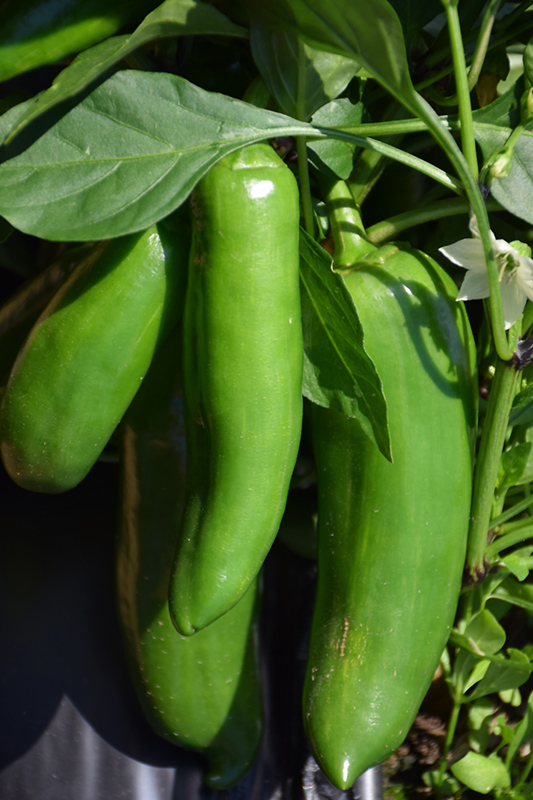Chocolate Stripe Hot Pepper
Capsicum annuum 'Chocolate Stripe'
Height: 24 inches
Spacing: 24 inches
Sunlight:
![]()
Hardiness Zone: (annual)
Group/Class: Hot Horn
Description:
Sturdy and high yielding, a wonderful addition to sunny gardens and patio containers; produces with fruits emerging green with cream stripes, ripening to brilliant red; spicy hot flavor; perfect for adding a kick to dishes, sauces and salsas
Edible Qualities
Chocolate Stripe Hot Pepper is an annual vegetable plant that is commonly grown for its edible qualities. It produces green oblong peppers (which are technically 'berries') with creamy white stripes which are usually ready for picking from mid summer to early fall. The fruit will often fade to red over time. The peppers have a spicy taste and a crisp texture.
The peppers are most often used in the following ways:
- Cooking
- Preserves
- Drying
- Seasoning
- Sauces
Planting & Growing
Chocolate Stripe Hot Pepper will grow to be about 24 inches tall at maturity, with a spread of 16 inches. When planted in rows, individual plants should be spaced approximately 24 inches apart. Because of its vigorous growth habit, it may require staking or supplemental support. This vegetable plant is an annual, which means that it will grow for one season in your garden and then die after producing a crop.
This plant is typically grown in a designated vegetable garden. It should only be grown in full sunlight. It is very adaptable to both dry and moist growing conditions, but will not tolerate any standing water. It may require supplemental watering during periods of drought or extended heat. It is not particular as to soil type or pH. It is somewhat tolerant of urban pollution. This is a selected variety of a species not originally from North America.
Chocolate Stripe Hot Pepper is a good choice for the vegetable garden, but it is also well-suited for use in outdoor pots and containers. With its upright habit of growth, it is best suited for use as a 'thriller' in the 'spiller-thriller-filler' container combination; plant it near the center of the pot, surrounded by smaller plants and those that spill over the edges. Note that when growing plants in outdoor containers and baskets, they may require more frequent waterings than they would in the yard or garden.

